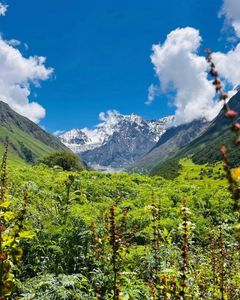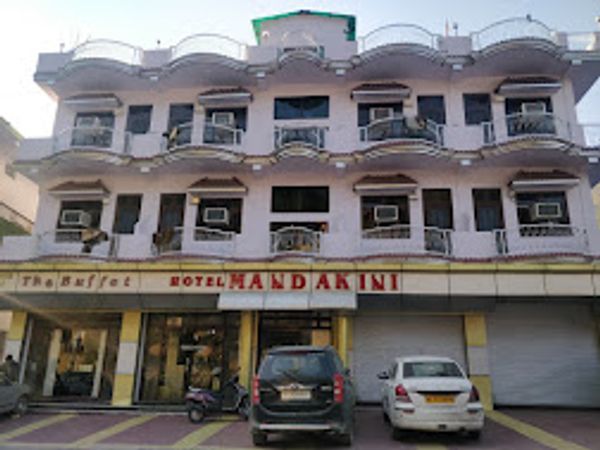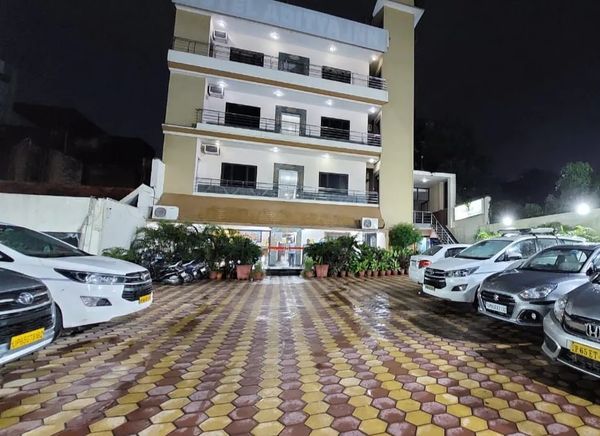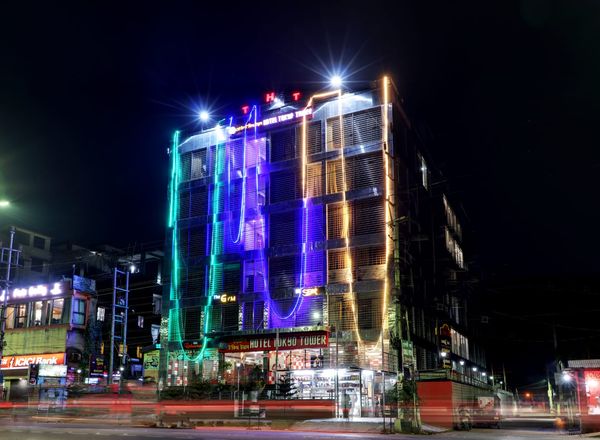Valley of Flowers Difficulty Level: What You Must Know Before You Go
 Ashish Rawat
28 Jul, 2025
11 mins read
83
Ashish Rawat
28 Jul, 2025
11 mins read
83

The Valley of Flowers in Uttarakhand, India, is one of the most beautiful places you can visit in the Himalayas. Covered in a wide range of colorful blooms, it attracts trekkers, nature lovers, and photographers from all over the world. But many people wonder: how hard is the trek to Valley of Flowers? Is it good for beginners? Do you need to train for it?
In this guide, we’ll break down the real difficulty level of the Valley of Flowers trek. We’ll also share practical tips to help you prepare for a safe and enjoyable trip.
Where Is the Valley of Flowers?
The Valley of Flowers is located in the Chamoli district of Uttarakhand. It is part of the Nanda Devi Biosphere Reserve, a UNESCO World Heritage Site. The valley is open to visitors from June to early October, with July and August being the best time to see the full bloom of flowers.
Valley of Flowers trek takes you through lush green trails, scenic mountain paths, and small streams that add to the beauty of the journey. As you walk deeper into the valley, you’ll be surrounded by a sea of colorful wildflowers and snow-covered peaks in the distance. The gradual change in landscape keeps the trek interesting and makes every step worth it. Whether you're going for the flowers, the mountain views, or simply the peace of nature, this trek offers something special for every traveler.
Trek Overview
The trek begins from Govindghat, and spans a 40 km round trip, typically completed in 5 to 6 days. The trail meanders through dense forests, cascading waterfalls, gushing streams, and wooden bridges, making every step an experience of nature’s finest artwork. The route leads to Ghangaria, a quaint hamlet that acts as the base camp for both the Valley of Flowers National Park and the sacred Hemkund Sahib, a high-altitude Sikh pilgrimage site located at 4,329 meters. The steep ascent to Hemkund Sahib is demanding, but the panoramic views of snow-capped Himalayan peaks from the top are immensely rewarding.
Here is a quick look at the trek route of Valley of Flowers:
- Govindghat to Pulna by vehicle: 4 km
- Pulna to Ghangaria: 9-10 km (one way trek)
- Ghangaria to Valley of Flowers: 4 km one way (8 km round trip)
- Ghangaria to Hemkund Sahib (optional): 6 km one way (12 km round trip, steeper)
So in total, you will be trekking around 40 km, depending on whether you visit Hemkund Sahib or not.
Is the Trek Difficult?
The Valley of Flowers trek is moderate in difficulty. That means it’s not too easy, but also not too hard. Here’s what makes it doable:
- Well-marked trails: The path is clear and wide in most parts.
- Good for beginners: Many first-time trekkers have completed this route successfully.
- No technical climbing: You don’t need ropes or climbing gear.
- No snow during trek season: From June to September, the trail is free of snow.
However, there are a few things that make it a little challenging:
- Altitude: The highest point in the Valley of Flowers is around 11,500 feet. That’s high enough to cause shortness of breath, especially if you're not used to altitude.
- Long walking hours: You’ll walk for 5 to 8 hours a day on trekking days.
- Steep climbs: Some parts of the trail, especially the last 2 km to Ghangaria and the start of the valley route, are steep.
- Weather: It can rain anytime, which makes the trail slippery.
So while the trek is not extremely hard, you do need to be reasonably fit and prepared.
Who Can Do the Trek?
Most people in average health and fitness can do the Valley of Flowers trek with some preparation. Here’s a general idea of who can go:
- First-time trekkers: Yes, with proper planning.
- Families: Yes, even with kids above 10 years old.
- Senior citizens: Yes, if they are fit and used to walking.
- People with health issues: Should consult a doctor first, especially for high altitude.
How to Prepare for the Trek
To enjoy your trek and avoid issues, you should prepare at least a few weeks in advance. Here are some easy tips:
- Start walking: Practice walking 5 to 7 km daily.
- Stair climbing: Helps build leg strength and stamina.
- Carry a backpack: Practice carrying a small pack to get used to the weight.
- Stay hydrated: Train your body to drink water regularly.
- Pack light but right: Carry essentials like rain gear, walking stick, water bottle, and light snacks.
What to Expect on the Trail
Knowing what the trail looks and feels like helps in mental preparation.
- Govindghat to Ghangaria: This 10 km trail is the longest stretch. It’s a mix of gentle and steep sections, with resting spots, small shops, and waterfalls along the way. It can take 5 to 7 hours depending on your pace.
- Ghangaria to Valley of Flowers: This part is easier and scenic. The trail passes through forest, river bridges, and finally opens into the valley full of flowers. It’s a gradual climb and takes 3 to 4 hours for a round trip.
- Weather: Expect rain showers, especially in July and August. Carry a raincoat or poncho. Temperatures can drop in the evening, so a light jacket is a must.
Mules and Helicopters
If you’re unsure about walking the full trail, there are other options:
- Mules: Available from Govindghat to Ghangaria. Helpful for older people or those who get tired easily.
- Porters: Can carry your luggage.
- Helicopter service: Sometimes available from Govindghat to Ghangaria (weather-dependent). Book in advance if you want this.
These options make the trek more manageable for people who need support.
Tips to Stay Safe
- Start early: Leave early to avoid afternoon rains.
- Stay hydrated: Carry at least 2 liters of water.
- Eat well: Carry light snacks and eat meals on time.
- Don’t rush: Walk at your own pace and take breaks.
- Watch your step: Trails can be slippery when wet.
Accommodations and Food
- Govindghat and Ghangaria have guesthouses and basic hotels. Book in advance during peak season.
- Food is simple vegetarian fare like rice, dal, and roti. Carry some dry fruits and snacks if you need extra energy.
- No camping inside the Valley is allowed. You must return to Ghangaria the same day.
Final Thoughts
The Valley of Flowers is not just a trek, it’s an experience of nature at its finest. The colors, the quiet, and the fresh mountain air make it a memory for life. While the trek does require effort, it is completely doable for most people with some preparation. If you’ve been thinking about going, don’t let the fear of difficulty stop you. Get ready, train a little, and take the first step.
Remember, it’s not a race. It’s your journey. Go at your pace, enjoy the views, and let the flowers guide you.
Written By:
Ashish Rawat



Hotels at your convenience
Now choose your stay according to your preference. From finding a place for your dream destination or a mere weekend getaway to business accommodations or brief stay, we have got you covered. Explore hotels as per your mood.


